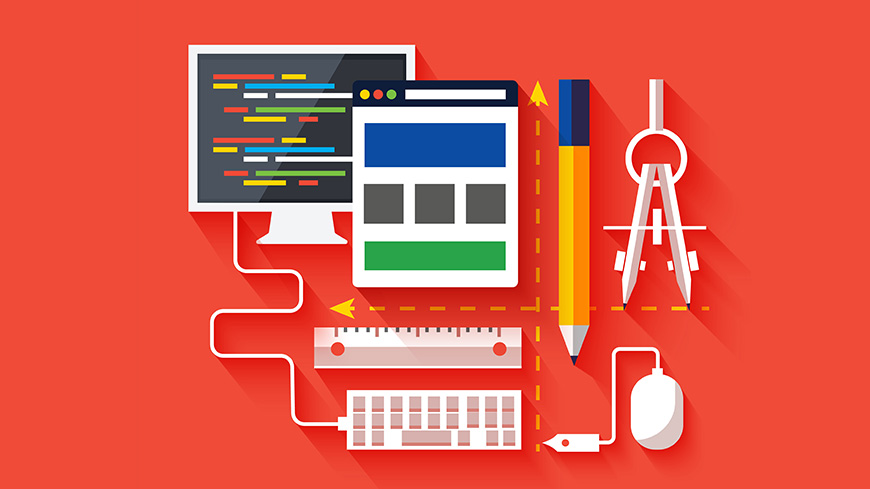eTail and eCommerce sound like synonyms. That’s why many business owners use them as interchangeable concepts, however, there is a significant difference between them. So, what are they stand for, and what similarities and differences do they have?
The main thing to keep in mind is that whatever wording you choose, eTail and eCommerce are on the special rise now. Therefore, if you decide to follow the path of electronic commerce, let’s get started by learning the differences between eTail and eCommerce businesses.
eTailing vs eCommerce: Definitions of Both Concepts
Let’s get started with the eTail meaning. eTailing means selling retail goods on the Internet. Pay attention that eTail is focused on selling goods only – this concept doesn’t cover financial transactions, shipping, marketing, and other essential elements of the customer experience modern shoppers are used to.
eCommerce, in turn, stands for all commercial transactions that are carried out by electronic means on the Internet. Plus, there is also a concept of digital commerce, and we have dwelled on its essence in one of our previous articles. In brief, digital commerce is about creating a holistic eCommerce experience across multiple marketing channels.
So, proceeding from the definitions of these terms, it becomes obvious that electronic retailing is part of e-commerce, while eCommerce is a part of digital commerce, and there is a connection between all of them.
Differences Between eTail and eCommerce
What are the key differences between eTail and eCommerce that are important to understand? Here are some important points:
- E-retail stands for selling retail products on the Internet. eCommerce covers transactions that are carried out by electronic means on the Internet.
- eTail is a narrower concept. eCommerce is a broad concept that has eTail as its part.
- The US has the largest eTail market. China, in turn, is the largest eCommerce market in the world.
Ready to join the dynamic industry of online trading and service delivery?
Get in touch with our tech team to get started!
- eCommerce involves the provision of goods and services to the end consumer, while this is not always the case for eTail.
- eTail implies sharing profits with additional intermediaries. eCommerce eliminates mediation.
eTail and eCommerce Advantages and Disadvantages
Now let’s look at all the advantages and disadvantages of each model to understand the significant differences.
eTail Pros and Cons
To better understand the concept of eTail, let’s consider the eTailing example of Amazon. This is a classical eTailer that doesn’t sell the goods produced on its own. Instead, it provides a platform to let sellers showcase their offers and connect them with buyers. By the way, we have recently dwelled on the pros and cons of running an Amazon business vs creating your own eCommerce website, so you are welcome to check it as well.
Pros:
- With eTail, you can reach out to more potential customers and increase revenue.
- There are also wholesale opportunities so that you can offer more competitive prices.
Cons:
- You have to share your profit with an intermediary. This is just how Amazon makes money – it charges a seller fee each time a transaction is made on the platform.
- You have limited access to customer data because of the specifics of eTail websites.
- You have to manage the distribution network and take double care of brand image.
- The presence of multiple distributors can create intra-brand price competition.
eCommerce Pros and Cons
So, eCommerce involves running your own website and selling products directly to the end customer. To date, the concept of eCommerce is more popular and commonly used compared to eTail, so let’s discuss its pros and cons as well.
Pros:
- There is no need to share your profit with an intermediary
- You can sell the products and deliver your services to the end-user
- Thanks to the benefit above, you get more customer data gathering and analysis opportunities
- You are solely responsible for your brand image
- You are free to use online marketing and data analysis tools on your website to identify the needs of your customers and promote eCommerce services and goods.
Cons:
- Using your website as the main sales point requires significant investment in marketing
- eCommerce is one of the most competitive industries with frequently changing shopping trends and customer expectations.
Instead of the Conclusion
So, at first glance, eTail and eCommerce may seem completely similar concepts. But it is worth understanding that they have different goals and imply different approaches. Let’s review the details briefly.
- eTail usually refers to the activity that involves the sale of retail goods and services over the Internet. It also involves the distribution of goods through a network of online stores.
- eCommerce covers a wider range of activities. This model involves managing your own website and selling the product to the end-user.
Both eTail and eCommerce come with their advantages and disadvantages. Therefore, when choosing a business model, make sure to analyze your product specifics, research the target market, estimate the resources you have, and make a well-balanced decision.










![How to Start an Online Clothing Store [Step-by-Step Guide]](https://ideainyou.com/wp-content/uploads/2022/10/alyssa-strohmann-TS-uNw-JqE-unsplash-3.jpg)




